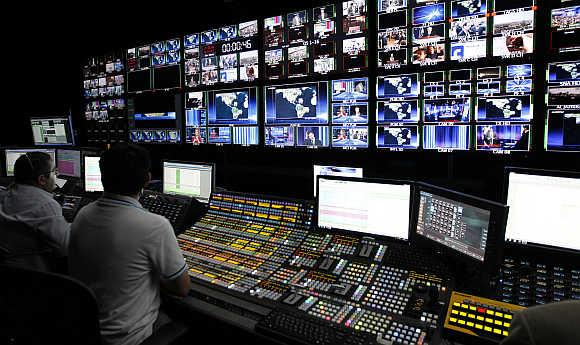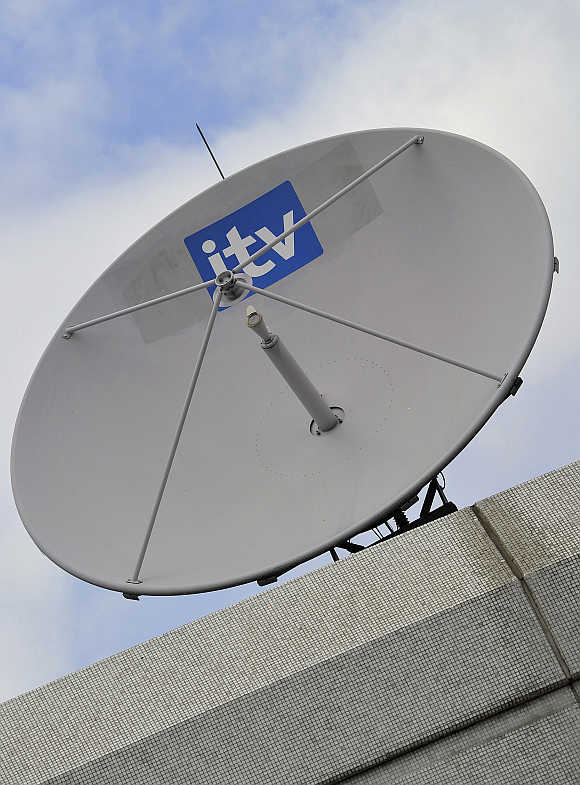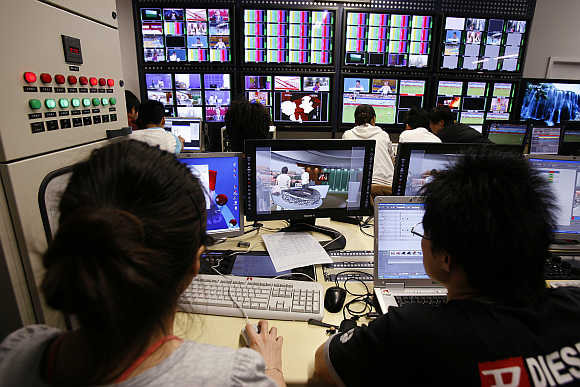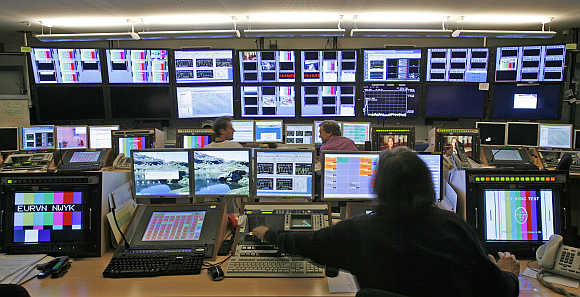
Its software helps you search through what is playing on 700 channels, on mobile, on your set-top-box, on your iPad, among other things. Think of it as a TV search engine.
More channels mean more demand to license the WoI software. That is what prompted Intel to invest an undisclosed amount to pick up a stake in WoI last year. "Intel thinks we are a TV search platform that will get more important with digitisation," says Phadnis.
Digitisation is the key word here. Following a law passed last year, the four metros are more or less digital. The rollout in 38 more cities has already begun.
As the world's second largest TV market moves into the final phase of expanding its bandwidth, the number of channels could go way beyond 1,500. Every analog frequency once digitised is capable of carrying 10 times as much traffic.
In effect, India could have as many as 8,000 channels in the future.
...

This opening up of the pipe carrying signals to India's 148 million TV homes that reach over 700 million people presents many challenges. But it also presents opportunities that global investors and Indian companies are eyeing keenly. The opportunities could be in fields as diverse as analytics, research, applications, improving sound systems or managed billing and services for cable companies, among other things.
In mature markets such as the US, many of the companies in these areas are listed entities with a topline in the range of $500-$700 million, points out Vivek Couto, executive director, Media Partners Asia, a Hong Kong-based consultancy. He reckons the services can be clustered in three broad areas: managed services (technology, billing), content and applications and software. These do not include the selling of STBs, or set top boxes.
So, What's on India and research and consulting firms such as Ormax Media, Chrome Data Analytics & Media, Castle Media and Dolby among others are pieces of an ecosystem in transition. Once it is complete, the face of the Rs 34,000 crore (Rs 340 billion) Indian television industry could change completely.
To understand what the post digitisation consumer and market could look like, consider the 51 million digital homes already there, a bulk of them DTH (direct-to-home).
...

According to L V Krishnan, CEO, TAM Media Research, this viewer is more focussed, goes straight for the channel he wants, surfs a lot more within genres instead of surfing generally. In digital homes, non-cricket sports, movies and shows for kids tend to be consumed more.
These are insights that broadcasters such as Star, Sony or Zee are already addressing with HD packages that have shown marked improvement in average revenue per user, or ARPU.
For several broadcasters, DTH now brings in roughly half of the pay revenues for broadcasters even though cable reaches more people. As a result, post digitisation the game will change from selling to advertisers and cable companies to selling directly to consumers, and from selling mass channels to specialised ones.
"Your content, marketing, everything needs to be more targeted," says Pankaj Kedia, country manager, Dolby Laboratories. Sunil Lulla, group CEO, Times Television Network, agrees. He points to the opportunities for broadcasters and MSOs, or multi system operators, to create and market better channel packages.
A fully digitised Indian TV industry will throw up more questions that will need services built around them. For example, what are the gaps to profitably address in movies, kids or sports - the boom areas post digitisation. Should one launch a channel with Rajnikant movies only? What about a football channel?
...

Shailesh Kapoor, CEO, Ormax Media, has built a business around answering such questions. His company does content research for television, film and radio. It tests TV shows, with quantitative and qualitative research. These are then tweaked by broadcasters who keep testing the shows till they think they have got it right. This new ecosystem, however, is not just about television. It is about television in the future.
Of the 45 million devices WoI's software sits on, more than 40 million are designed for STBs. On an STB the software functions like an electronic programming guide, the basic menu that viewers use to choose what shows to watch. This has its limitations since you "can't do specialised searches on an STB," says Phadnis.
A mobile phone app, on the other hand, can visibly enhance the TV viewing experience. It allows you to use specific keywords. For instance if you want to know whether a Salman Khan movie is playing, you can search for 'Salman Khan' on the WoI app. A more customised location-based search is the next step.
For instance, there is no point showing 15 channels where a Khan movie is playing if half of them are not available to the user. This playing out of applications or content on smartphones opens up a wide range of opportunities. For instance, one of the things Castle Media does is advise broadcasters on how to repurpose content and tag it.
...

This ensures that the play out on TV, mobile, smartphones or elsewhere is simpler. On a recent task for a Food Food channel, Castle had to figure out whether brinjal, aubergine or eggplant was the word to use for good old baingan. It chose all three because in the US it is eggplant, in Europe aubergine and in India, brinjal.
So, a search for any of the three words in any country would lead to the same result. Otherwise, "You could end up digitising 10,000-15,000 hours of content and not get the right answer if the back-end is not right," says Vynsley Fernandes, director, Castle Media.
Lulla, however, thinks that it is early days to talk about deep-dive analytics or metatagging. He reckons that the first piece of the ecosystem puzzle should be a robust audit of digital head ends, equipment and processes, whether by the Telecom Regulatory Authority of India or by an independent firm. Audit is in fact an area Couto points out to.
Did we spot someone rubbing his hands?